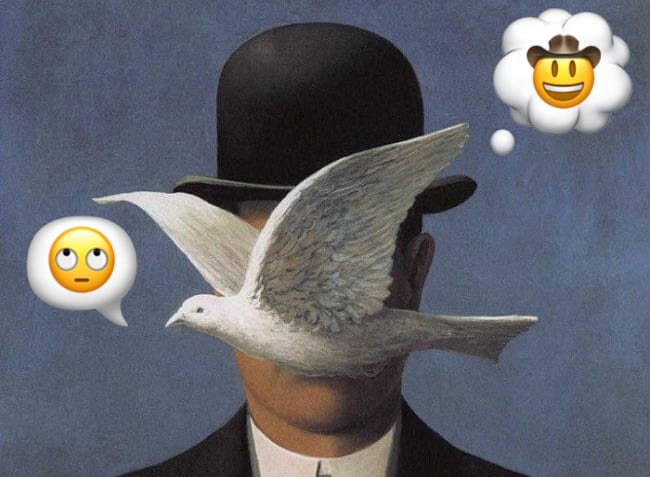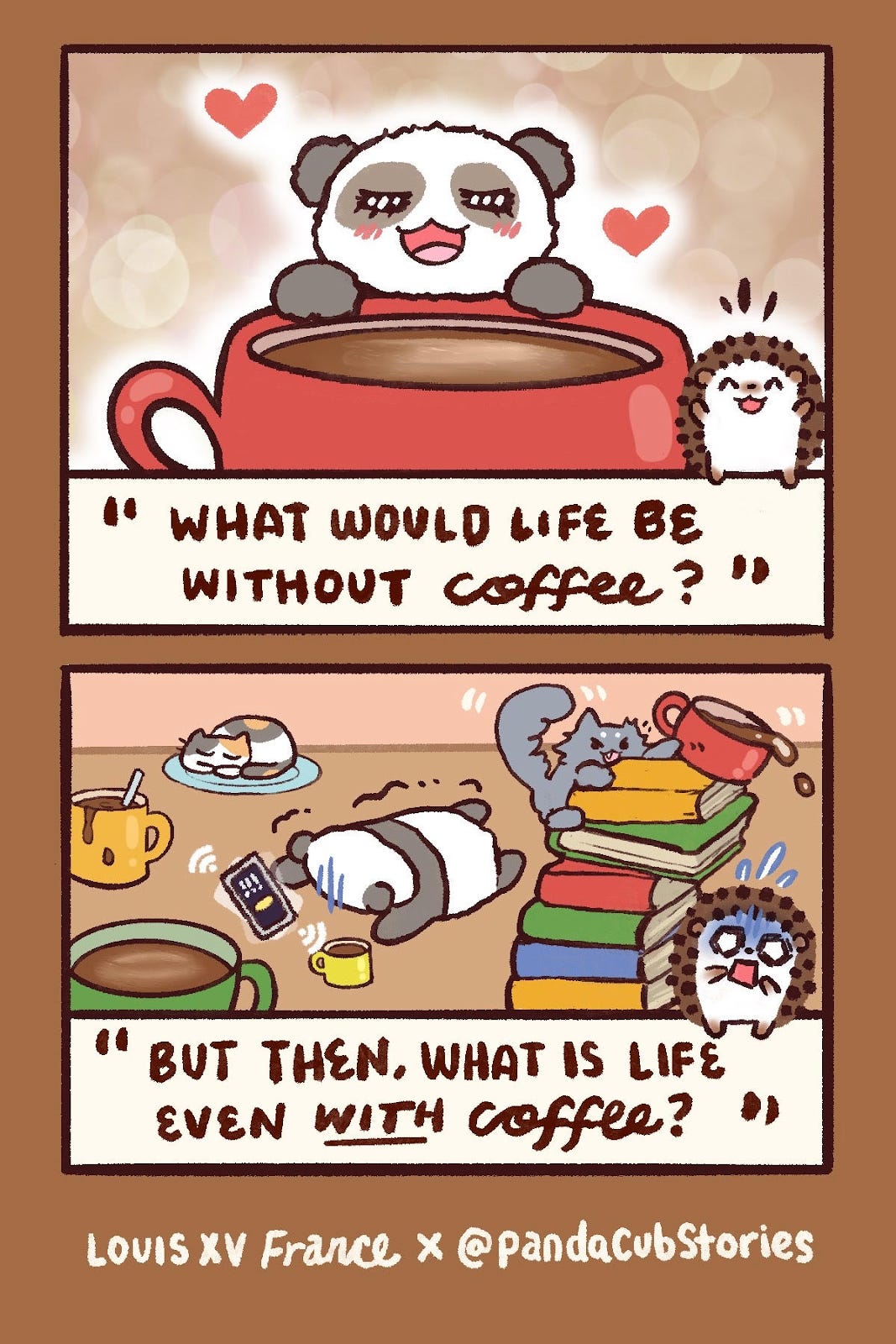The Wit's Guide to Hats
Or, unquestionable diablerie

Everyone who puts on a hat must look in the mirror and ask: Am I ridiculous?
The answer need not sway your actions. You can be like Bertie Wooster, besotted by the blue alpine hat he sports in Stiff Upper Lip, Jeeves. “It unquestionably leant a diablerie to my appearance, and mine is an appearance that needs all the diablerie it can get,” he thinks.
His valet isn’t convinced.
“Don’t you like this hat?”
“No, sir.”
"Well, I do," I replied rather cleverly, and went out with it tilted just that merest shade over the left eye which makes all the difference.
It’s very difficult to find a hat that doesn’t make a statement. The black hats and white hats are obvious enough, whether on cowboys or hackers. Even the plain black ball cap that Kendall Roy wore to stay anonymous in Succession launched a thousand think pieces on stealth luxury. Helpfully, there’s a guide to what your hat says about you:
“Wearing a hat implies that you are bald if you are a man and that your hair is dirty if you are a woman. Every style of hat is identified with some form of undesirable (derby = corrupt ward heeler; fedora = Italian gangster; top hat = rich bum; pillbox = Kennedy wife, et cetera).”
― P.J. O’Rourke
But maybe you don’t care. This is the best way to wear a hat, or perhaps any item of clothing. G.K. Chesterton’s best essay is titled “On Running After One’s Hat,” and it’s in that piece that he dispenses the bon mot that appears on Riposte Card No. 1, the one about an adventure and an inconvenience being the same thing.
“There is an idea that it is humiliating to run after one’s hat; and when people say it is humiliating they mean that it is comic,” he writes. “Now a man could, if he felt rightly in the matter, run after his hat with the manliest ardour and the most sacred joy.”
“Many in this world run after felicity like an absent man hunting for his hat, while all the time it is on his head or in his hand.”
― Sydney Smith
When he was a young reporter in Chicago in the 1910s, the screenwriter Ben Hecht covered a trial in which a murderer was set free because of a hat. In a classic bit of chicanery later employed in the O.J. Simpson trial, the defense asked the accused to try on a hat that was allegedly dropped by the killer as he fled.
“The defendant tried on the hat. The jury laughed. There is nothing more quickly humorous than a hat three sizes too small perched on a big man’s head,” Hecht recalled. “‘Ropes’ O’Brien, the state’s attorney, cried out that a strange hat had been substituted for the state’s ‘Exhibit A.’ But how to prove such a thing to a chuckling jury? Mr. Erbstein’s defendant, a prominent murderer, walked out of the courtroom a free man.”
“I have recently acquired a new hat of such ferocity that it has been running my whole life for me. I wake up in the morning thinking ‘who shall I wear my hat at today?’
― Katharine Whitehorn
We all have many hats to wear as we shuffle through this life, a point memorably made by Sandra Balcovske, Second City alumnus and Toronto dramaturge. Her warning, passed along by those who have seen it proven time and time again on stage, is that if you’re at a show and a character says “we all have many hats to wear as we shuffle through this life,” and then picks up the first of seven hats to deliver a monologue, the audience can safely groan at the knowledge there are six more monologues coming their way. It’s an egregious form of signposting, one that gestures toward the exit signs.
“There is something about a blurb-writer paying his respects to a funny book which puts one in mind of a short-sighted lord mayor raising his hat to a hippopotamus.”
― Michael Palin
If you do choose to wear a hat, ensure that you do not put a hat on said hat. This term of art from comedy writers means, in the words of Bill Hader, “one funny thing but then a totally separate funny thing on top of it.” Two negatives prove a positive and you lose the laugh. Interestingly, “hat on a hat” is a totally separate term of art from the world of football. Which hat on a hat you know is essentially a sorting hat — and by saying that, I’ve put a hat on a hat on a hat, or a hat trick. Am I ridiculous?
Bamboo Latte Hangover!
The June Riposte Card has arrived! Linda Yi, crackerjack culinary cartoonist, selected one of my all-time faves and certainly the best thing ever said by a crown prince of France. It’s the hard turn from praising coffee to questioning existence that gets me, even more so when a comatose panda and apoplectic hedgehog are involved. My beloved 30 paid subscribers will be getting a few of these in an envelope shortly! New subscribers will receive the complete set, featuring work by Antony Hare, Chip Zdarsky, and Graham Roumieu! Join them today!
Quote Vote
“My life was the best omelet you could make with a chainsaw.”
― Thomas McGuane
The season has changed, and thus does the topic. Here’s a grabbag of directions we might travel, and as always it’s up to you.
Get Wit Quick No. 205 tips its hat to Kelly and Charlotte for their research assistance. If a tiny hat on a big man’s head is quickly humorous, how do we explain Rick Moranis’s performance as Dark Helmet in Spaceballs? Maybe it’s inexplicable. Or perhaps the answer is in my book Elements of Wit: Mastering The Art of Being Interesting. At the drop of a hat, you may tap the ❤️ below.


